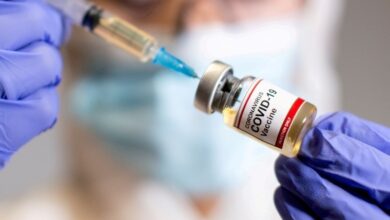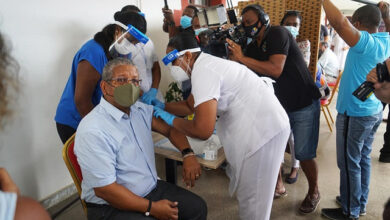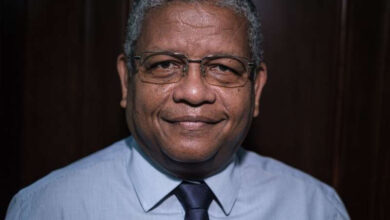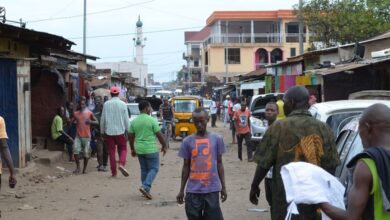Seychelles
The Seychelles, in long form the Republic of Seychelles is an archipelago of 115 islands (including one artificial) located in the west of the Indian Ocean and attached to the African continent. All these islands are grouped into a state whose capital is the city of Victoria on the main island of Mahé.
Seychelles history
Discovery
The first to visit the archipelago were probably Arab merchants, but the first written accounts were made in 1501 by the Portuguese explorer Vasco de Gama. The latter gave the archipelago the name of Amirantes, which today designates the part comprising the granite islands of Seychelles. The same year, for the first time, Seychelles was drawn on a map drawn by the Italian Alberto Cantino. The first description of the Seychellois shores, before any human settlement, was written on the spot from January 19 to 30, 1609 by the sailor John Jourdan of the British ship Ascension. The latter, after having crossed the Cape of Good Hope, had ascended the eastern coast of Africa before setting course for the NNE, which brought him to the northern tip of the granite archipelago : he briefly describes the current islands of Mahé, North, Silhouette, Praslin and its neighboring islands and reports a total of more than thirty large and small islands and close to each other. Finally, on the 3rd day, the boat anchored at the shelter of Île Sainte Anne (opposite the future port of Victoria), on which the crew found abundant water on the green heights (today deforested and arid).
Between Africa and Asia, the islands were used by pirates before the arrival of the French. In November 1743, the governor of the Isle of France (present-day Mauritius) Bertrand-François Mahé de La Bourdonnais sent captains Lazare Picault and Jean Grossen to take possession of the archipelago on behalf of France. They named the main island of the archipelago “Mahé” in honor of the governor of the Isle of France. The French occupied, in 1756, the main islands of the archipelago which they named “Séchelles” in honor of Jean Moreau de Séchelles, then general controller of finances of Louis XV. In 1781, the French Mathurin Barbaron, corsair of the King, born July 20, 1737 in Lorient, son of Jean Barbaron marine surgeon (born in Fajolles, Tarn-et-Garonne) and Louise Lorans (2nd wife), approaches the island Mahé by the cove which now bears his name. The gardens of the large Barbaron estate are also a reference. The islands, lost by France in 1811 during the Napoleonic Wars, officially passed under the control of the United Kingdom in 1814. From 1916, during the First World War, the Seychelles army joined the British by sending an expeditionary force of 796 men, 358 of whom would never see their country again (Mont-Saint-Louis military cemetery Flowered in Victoria). This expeditionary force represents the largest effort of all the British colonies, in proportion to able-bodied men engaged under the British flag (almost 6%).
Independence
Since June 29, 1976, the Seychelles has formed an independent state, a member of the Commonwealth and La Francophonie. In 1977, a lawyer, France-Albert René, then Prime Minister, took power. Having become president (from 1977 to 2004), he established a single, socialist party with a Marxist tendency. Since then, Seychelles has defined itself as revolutionary and third world. Still in place in 1991, President René, under pressure (speech by La Baule, June 20, 1990), agreed to set his country on the path of multiparty politics and a certain liberalism, notably authorizing more privatizations. He left the presidency in 2004, at the age of 69, giving way to James Michel, who was re-elected on July 30, 2006. The presidential election of May 2011 saw the re-election of President Michel who won 55.4% of the votes cast, against 41.4% in Wavel Ramkalawan. He is running for the third and last time in the 2015 presidential election, winning the election with 50.15% of the vote cast against 49.85% for his opponent, Wavel Ramkalawan. But he is forced to wait for the second round of the election, when he had been elected in the first round in the previous elections. Following the defeat of his Lepep party (from the former single party) in the legislative elections of September 2016, James Michel announces his resignation from his post of President of the Republic in September 2016. On October 16, he is replaced by its vice-president, Danny Faure. A period of cohabitation begins between this new president and a Parliament controlled by the opposition to the ex-single party (which was in power since 1977).
Seychelles politics
The history of Seycheillois politics is spectacular. The archipelago became an independent state in 1976 with Sir James Mancham as President of the Republic and France-Albert René as Prime Minister. Only a year later, France-Albert René became President of the Republic following a bloody coup he managed to make people forget. He ruled the state in a socialist way. Two years later, in 1979, a state with a single party was formed with France-Albert René at its head. Despite two coup attempts, President René has always remained in power. In 1992, international pressure became too great and the political system reverted to a multi-party system. In 1993, a new constitution was introduced, but René remained in power until his resignation on April 14, 2004. In 2006, the presidential election gave 53% to the candidate of the Lepep party against 47% for the candidate of the PNS. Contrary to reports by international observers, fraud would have taken place during these elections. In 2007, the party in power for 30 years retained the majority in the National Assembly. After the dissolution of the National Assembly by the President of the Republic James Michel on March 20, 2007 (the opposition boycotted the debates), the presidential majority of the Lepep party was renewed with the same number of seats (23 out of 34 for the Lepep party, the 11 other seats returning to the PNS) than previously.
Political parties and elections
The main Seychellois political parties are: the lepep party the National Party of Seychelles PNS the Seychellois Democratic Party (PDS) During the election from 4 to 6 December 2002, the Lepep party won 23 seats out of a total of 34, the PNS 11 seats, the PDS 3.1% of the vote but no seats. Following the 2002 election, the term of the President of the Republic having come to an end, a new presidential election takes place from July 28 to 30, 2006. the Lepep party, represented by James Alix Michel, obtained 53.73 % voices. Wavel Ramkalawan of the SNP allied with the DP obtained 45.71% of the votes. The independent candidate Philippe Boullé obtained 0.56% of the votes.
Seychelles economy
Tourism is the main resource of Seychelles. Industrial tuna fishing is developed, Port-Victoria is the first transhipment port for tuna in the Indian Ocean. A cannery exists on site. Several real estate programs bring currency to the country, the most important and the most surprising is certainly Eden Island (artificial island built on fillings). The offshore and free zone sectors have developed considerably over the past ten years ; the jurisdiction is not included in the OECD lists. The mission of the SIBA (Seychelles International Business Authority) is to regulate the various government provisions and to supervise offshore professionals. In October 2008, Seychelles was affected by the international financial crisis to the point of being in an economic situation of near bankruptcy. On April 16, 2009, the Paris Club and the Republic of Seychelles agreed to a nominal cancellation of 45% of the debt stock. Seychelles is committed to implementing the economic reforms required under the program supported by the International Monetary Fund (IMF).
Seychelles demography
With an estimated population of 92,430 inhabitants in 2015, the Seychelles has a positive demographic growth (0.8%), driven by immigration and a dynamic birth rate. The population of Seychelles should therefore exceed 100,000 inhabitants by 2018. With the exception of fishermen from the surrounding islands, the Seychelles had no indigenous population when the first Europeans arrived, between 1580 and 1750. 98% of Seychellois are therefore descendants of immigrants : Europeans (French, Portuguese, English), Africans, Indians and Chinese are the most represented. Today, the vast majority of Seychellois are Métis of European and African origin and mainly Catholics.
Seychelles education
Seychelles language
Seychelles has three official languages (according to article 4 of the constitution): Seychellois Creole, common language with French lexical base and mother tongue of 95% of the population and spoken by 97% of the population. It is said to have its base in Mascarin Creole and is very close to Mauritian Creole; English, the language of the second colonizer for more than a century and a half, it is spoken by 60% of the population and is mainly used in administration and business; French, the language of the first colonizer for seven decades, spoken by 30% of the population (53% including partial French speakers), is used mainly in the written press, commercial displays and Sunday religious ceremonies.
-
Seychelles

WHO Reviewing Seychelles COVID-19 Data After Fully Vaccinated Test Positive
The World Health Organization (WHO) on Tuesday said it was reviewing COVID-19 data from Seychelles after more than a third…
Read More » -
Seychelles

Seychelles Becomes First African Nation To Begin Coronavirus Vaccination Campaign
Seychelles became the first African nation to begin its vaccination campaign against the new coronavirus on Sunday, with the country’s…
Read More » -
Seychelles

Seychelles: Wavel Ramkalawan Declared As Presidential Election Winner
Wavel Ramkalawan was declared as the winner of the presidential election in Seychelles on Sunday, marking the first opposition victory…
Read More » -
Burundi

Burundi Police Says It Killed At Least 22 Evil-Doers In Pre-Election Violence In Bujumbura
Burundi police on Tuesday said at least 22 “evil-doers” have been killed in clashes between the security forces and an…
Read More »

